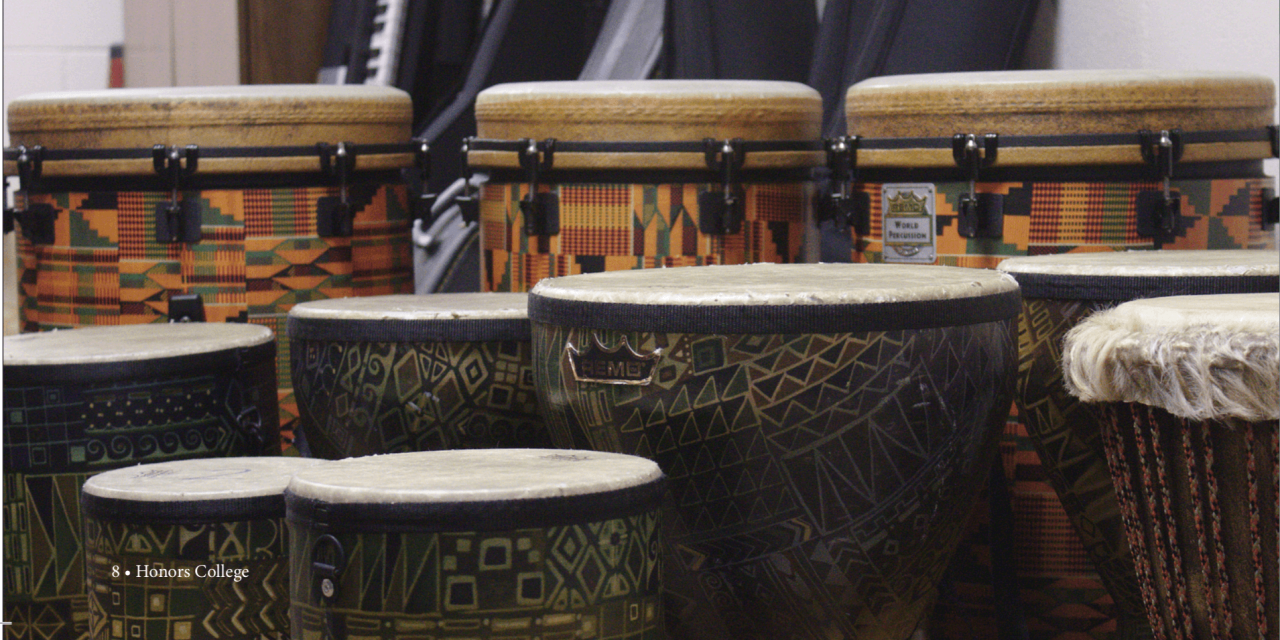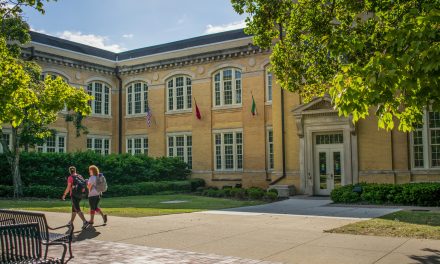STORY BY
Susanna Dunn
PHOTOS BY
Ben Wasilewski and Kendra Giles
DESIGN BY
Marissa Elkins
Music is powerful. It is one of the most universal forms of art, constantly in action all around the world, and it has been for centuries. Music creates emotion and stems from creativity and a need for individual expression. We rarely encounter a day free from music, whether it be a song playing at the grocery store or on the radio in the car. For many clients of UA music therapy students, music is much more than background noise; it can be therapeutic.

Music therapy, a form of therapeutic treatment in which music is used to help individuals reach specific goals and promote health and quality of life, has become exponentially popular across the globe within the past few decades. The music therapy program at The University of Alabama focuses on utilizing students’ musical talents to engage in meaningful relationships with clients in a way that promotes growth and positive outcomes.
Music therapy majors at UA utilize clinical and therapeutic techniques to achieve emotional, physical, behavioral, and cognitive goals in clients. Junior music therapy student Emily Kent is just one example of how devoted many music therapy students are to their clients. For instance, Kent’s experience leading a group therapy session in writing a song together was one of the key moments in her experience as a musician. “Music activates parts of the brain that other auditory or visual stimuli cannot activate,” Kent said. “It is an extremely powerful and emotionally therapeutic tool.”
Following acceptance into the university and successfully auditioning for the School of Music, students in the music therapy program tend to spend 15 to 20 hours a week outside of class completing coursework or preparing for practicum work. The workload for these students is not light to say the least, but many students who plan to pursue careers in music therapy find that the personal fulfillment yields the time and effort spent through the program well worth it.
There are many routes often taken after graduating college with a bachelor’s. Many students will work in hospitals, medical settings, schools, nursing homes, psychiatric facilities, substance abuse facilities, or private practices according to junior music therapy student Maribeth Vain.

“Since music therapists work with such a wide range of people, there are a lot of options for when we leave college,” Vain said. “There are music therapists really everywhere, which is awesome.” Music therapists work with a variety of populations, often including hospitalized clients, people with Alzheimer’s or dementia, people with addictions, and people with autism spectrum disorder. Students like Vain and Kent find empowerment in their ability to connect with their clients through music during difficult times.
There are three main takeaways that help differentiate music therapy from other forms of therapy and contribute to the uniqueness of the career field.
First, music therapy is based off of reputable clinical research that has validated that music is an effective means of therapy for a variety of conditions. It is important to many musicians that non-musicians acknowledge the effectiveness of their work, especially since music therapy is a growing field.

Second, music therapy is a non-medicinal form of treatment, although it can be paired with medicine for more intensive cases. Because music therapy often has many holistic benefits, medicine can become less of a necessity among certain populations.
Lastly, music therapy is more than just a visitor playing the guitar and singing for a hospitalized person. Music therapists create one-on-one relationships and connect with clients on a personal level, often working with clients who have no experience in music and writing songs about their struggles, regrets, or memories.
“We use music to achieve non-music goals,” Vain said. As music therapy becomes a more and more prominent form of therapy, it is becoming clearer that the therapeutic benefits of music are drastically improving the lives of many, one song at a time.






